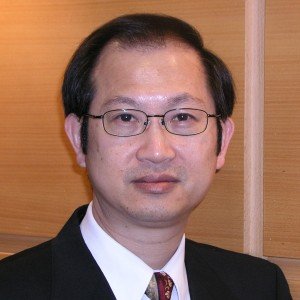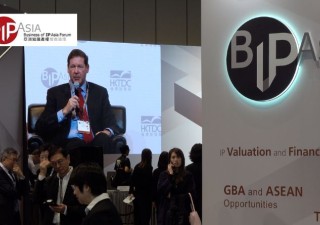The Taiwan Intellectual Property Office (TIPO) completed two significant projects before the end of 2021:
-
A project to improve the patent search application environment in Taiwan; and.
-
A project to improve patent portfolios and capabilities for industry analyses.
This article will summarize the background and outcomes of the above projects.
Taiwan Patent Search Center
TIPO established the Patent Search Center (PSC) on March 15, 2012; the Director General of TIPO acts as the president of PSC. At the beginning, PSC recruited quite a few experienced patent examiners as its experts to proceed with prior art searches for the TIPO. The missions of PSC can be separated into the following stages:
-
First Stage (from 2012 to 2014):
Missions: (A) Conducting prior art searches to support TIPO’s patent examinations; and
(B) Establishing PSC’s internal patent management system (first phase).
-
Second Stage (from 2015 to 2016):
Missions: (A) Conducting prior art searches to support TIPO’s patent examinations;
(B) Establishing PSC’s internal patent management system (second phase); and
(C) Providing patent search services for outside clients (trial operation stage).
-
Third Stage (from 2017 until now):
Missions: (A) Conducting prior art searches to support TIPO’s patent examinations;
(B) Improving PSC’s patent knowledge management platform (final phase);
(C) Providing patent search services for outside clients (formal operation stage);
(D) Acting as one of the professional organizations in Taiwan designated by the Judicial Yuan to conduct patent infringement evaluations; and
(E) Providing industry patent analyses for the society.
PSC had accomplished the following mission targets in the period from 2018 to 2021 (see Table 1):
|
Years
|
Mission Tasks
|
|
2018
|
-
Number of patent search reports for TIPO: 9,350
|
-
Number of searches using TIPO’s databases: 10,084,885
|
-
Number of industry patent analyses: 2
|
|
2019
|
-
Number of patent search reports for TIPO: 10,058
|
-
Number of searches using TIPO’s databases: 10,844,682
|
-
Number of industry patent analyses: 2
|
|
2020
|
-
Number of patent search reports for TIPO: 9,569
|
-
Number of searches using TIPO’s databases: 10,373,247
|
-
Number of industry patent analyses: 2
|
|
2021
|
-
Number of patent search reports for TIPO: 9,790
|
-
Number of searches using TIPO’s databases: 12,812,556
|
-
Number of industry patent analyses: 2
|
Table 1.
TIPO’s Global Patent Search System
Establishment of the Global Patent Search System
TIPO has continuously cooperated with international organizations in recent years so as to introduce foreign patent and non-patent databases, such as EPOQUE.Net, STN (mainly for prior art references in chemical field) and Derwent Innovation (DI). TIPO also closely cooperated with primary foreign patent offices, such as the World Intellectual Property Organization (WIPO), the United States Patent and Trademark Office (USPTO), the European Patent Office (EPO), the China National Intellectual Property Administration (CNIPA), the Japan Patent Office (JPO), the Korean Intellectual Property Office (KIPO), and the patent offices of Southeast Asian countries – in total, 105 patent offices – and thus successfully established a Global Patent Search System (GPSS).
The contents and scale of GPSS
TIPO successfully made good connections with primary foreign patent offices so that TIPO’s patent resources would be synchronized with those of international patent search systems.
The total number of patent references and patent pre-grant publications included in GPSS has already increased from 100,421,457 in 2020 to 140,982,505 by the end of 2021, a growth rate of 40.39 percent. GPSS also increased by 26,208,202 pages of image files and text files in 2021.
GPSS provides several benefits to local users and foreign clients through the services of local patent firms and research institutes to save or minimize their expenses to establish private patent databases and remove obstacles to cross-border patent searches.
In 2021, GPSS was visited and used by local users from enterprises, patent law firms, universities and research institutes 2,130,315 times.
The average response time for each step or click using the GPSS was 1.92 seconds in 2020 and 1.85 seconds in 2021. The satisfaction survey made by TIPO regarding the efficiency of using GPSS has reached 81.3 percent. According to a satisfaction questionnaire survey in 2021, the proportion of users in local industries reached 53.90 percent, and the overall satisfaction rate reached 86 percent.
The features and other functions of GPSS
To reinforce the functions and usability of GPSS, TIPO proceed with electronic operations including imaging and digitization operations for patent documents. The digitization operation uses the latest optical character recognition (OCR) technology to capture the text parts in the scanned image files and convert their structured text data into XML data format so as to facilitate the access of GPSS and the identification of certain paragraphs of uncovered patent documents and specific pages through the internet.
Users may also download complete version of any patents and application publications filed with TIPO and foreign patent offices through GPSS without a service fee.
To comply with the net-zero carbon emissions policy of the Ministry of Economic Affairs (MOEA) of Taiwan, GPSS provides “Green Technology Categories” following WIPO’s invention classifications of green categories, including alternative energy, transportation, energy saving, waste management, agriculture and forestry, and administration, regulation and design. “Green Technology Categories” provides a one-click function for searching related green technologies and also includes a number of reports and articles dealing with green technology-related research and trends to facilitate users’ research and accelerate the development of inventions regarding green technologies.
TIPO now endeavours to increase other useful functions for GPSS. For example, GPSS will be able to disclose all references cited during examination stage(s) of the patents/application publications to be searched, the relation chart of all references, and the whole texts and particulars of the references cited. GPSS may also disclose “patent family” for all uncovered patents/application publications.
TIPO utilizes modern technologies to facilitate patent examinations
Online examinations
TIPO started to proceed with online patent examinations for the “first stage” of examination of invention patent applications and utility model applications in recent years. The online examination rate for invention patent applications and utility model applications in the first stage reached 100 percent before the end of 2021.
TIPO also made trial implementations of online examinations for design applications in 2021, and the online examination rate increased to 85 percent before the end of December 2021 (see Figure 1). TIPO has proceeded with full (100 percent) online examination for design applications from January 2022.
AI-assisted examination
In the near future, online examination will be implemented throughout the whole patent examination procedure so that administrative time and costs as well as the burden on examiners and administrative work can be significantly reduced. The digitized information of electronic files and the information of the examination process may serve as a good basis for future developments of cross-border electronic exchange or AI-assisted examination so as to improve examination quality and efficiency.
It is certainly expected that online examinations for patent applications will reduce the time for prosecution and the applicants’ inventions/creations may have better competitiveness in markets through the improved patent databases and the online examinations.
TIPO has sped up patent examination efficiency in recent years
In recent years, TIPO has invested a lot of funds to provide patent examiners with more internal and external patent and non-patent search resources. At the same time, PSC assists TIPO in carrying out the search of prior art references to proceed with substantive examinations so as to accelerate the procedure of patent examinations. Acceleration of examinations, particularly the substantive examinations for invention patent applications, is normally beneficial to applicants to promote industrial innovations and enhance industrial competitiveness.
As can be seen from Figure 2 and Table 2, TIPO’s average completion period (ACP) of the first examination stage of invention patent applications is comparable to that of the JPO and KIPO in the past three years. It is noted, however, that the definition of ACP of substantive examination is not consistent in different countries. For instance, according to the USPTO, the ACP is calculated from the actual filing date to the mailing date of Final Office Action or Notice of Allowance. For the EPO and CNIPA, the ACP is calculated from the date of entering into substantive examination to date of Rejection Decision or Notice of Allowance. For TIPO, JPO and KIPO, the ACP is calculated from the date of requesting a substantive examination to the date of Rejection Decision or Notice of Allowance.
Average Completion Period (ACP) of Examinations
| |
2011 |
2012 |
2013 |
2014 |
2015 |
2016 |
2017 |
2018 |
2019 |
2020 |
2021 |
| USTPO |
33.8 |
31.7 |
28.6 |
27.0 |
26.3 |
25.6 |
24.2 |
21.7 |
21.8 |
23.3 |
~ |
| EPO |
36.7 |
36.2 |
23.0 |
22.8 |
26.9 |
26.5 |
24.9 |
31.8 |
26.1 |
23.7 |
~ |
| JPO |
34.0 |
29.6 |
23.4 |
15.2 |
15.0 |
14.6 |
14.1 |
14.1 |
14.3 |
14.8 |
~ |
| KIPO |
22.8 |
21.6 |
19.1 |
16.7 |
16.1 |
16.2 |
15.9 |
15.8 |
15.6 |
15.8 |
~ |
| CNIPA |
22.9 |
22.6 |
22.2 |
21.8 |
21.9 |
22.0 |
22.0 |
22.5 |
22.2 |
20.0 |
~ |
| TIPO |
45.9 |
46.1 |
41.3 |
33.4 |
26.0 |
19.8 |
15.5 |
14.0 |
13.6 |
13.9 |
13.95 |
Unit: Month
Table 2,
The author of this article has actual experience in assisting domestic and foreign applicants to seek patent protections in Taiwan, China and many other jurisdictions for more than 35 years so that the author may have position and capability to made some comparisons about the efficiency and quality of examinations made by primary patent offices in the world, particularly the patent offices and intellectual property offices listed in the above Table 2.
According to the author’s observations in the past 10 years, TIPO has not only significantly shortened its ACP of examination from 26 months in 2015 to 13.95 months in 2021, but has also well-improved the qualities of formal and substantive examinations of invention patent applications.
Industrial co-examination mechanism
TIPO recently made a trial implementation of an industrial co-examination mechanism. The purpose of such mechanism is to invite competent and appropriate experts from research institutes, universities, engineering associations and/or high-tech enterprises, in particular technical fields to provide proper technical opinions for the examiners’ reference in case the TIPO does not have suitable examiners with such technical backgrounds or capability or needs second opinions.
In 2021, TIPO invited experts from 157 high-tech enterprises and public engineering associations to provide technical opinions directed to specific technical issues to facilitate substantive examinations for 159,652 patent applications.
TIPO and PSC held competitions for patent search and patent portfolio skills
In order to stimulate diversified industry analysis and patent portfolio skills, TIPO and PSC held competitions for patent searches, analyses and patent portfolio in 2021. National Taiwan University, National Chung Hsing University, National Cheng Kung University, the IP Management & Promotion Administration Center at Taiwan (IMPACT), and the Taiwan Patent Attorneys Association acted as co-organizers for competitions. The individuals who attended the competitions came from 53 teams, such as well-known domestic enterprises, universities and academic research institutions.
All competition teams were requested to carry out all patent searches and analyses by using GPSS.
The purposes of such competitions are to provide opportunities and channels for domestic enterprises, universities and academic research institutions to discuss and exchange opinions and experiences in patent analyses, build better patent portfolios, and create more opportunities of close cooperation between industries and universities.
PSC completed industry patent analysis reports
PSC carried out two industry patent analysis reports for each year from 2018 to 2021. PSC’s reports are shown in the following Table 3:
|
Year
|
Topics of PSC’s Industry Patent Analysis Reports
|
|
2018
|
Patent analysis and portfolio for smart machine tools with improved cutting accuracy.
|
Patent analysis and portfolio for visual industrial manipulators (robotic arms).
|
|
2019
|
Patent analysis for smart medical treatment.
|
Patent analysis for smart diagnosis and treatment.
|
|
2020
|
Patent analysis and portfolio for advanced printed circuit boards.
|
Patent analysis and portfolio for 5G small base stations.
|
|
2021
|
Patent analysis and portfolio for body structure of battery electric vehicles.
|
Patent analysis and portfolio for new horizons for telemedicine patents & 5G application scenarios and service modes.
|
Table 3.
The industry patent analysis reports have already been published to the general public by PSC in 2020, according to the policy of TIPO.
According to the records, of the entities or individuals who requested the industry patent analysis reports from 2019, 57 percent came from patent and trademark firms, 12 percent came from manufacturing enterprises and 9 percent came from research institutes.
Of the entities or individuals who requested the industry patent analysis reports from 2020, 25 percent came from manufacturing enterprises, 17 percent came from patent and trademark firms and 17 percent came from research institutes.
Of the entities or individuals who requested the industry patent analysis reports from 2021, 32 percent came from manufacturing enterprises, 23 percent came from research institutes and 17 percent came from patent and trademark firms.
The records reveal that more and more manufacturing enterprises believe that the PSC’s industry patent analysis reports are valuable to them to implement appropriate patent analysis and portfolio so as to promote business in the markets.








